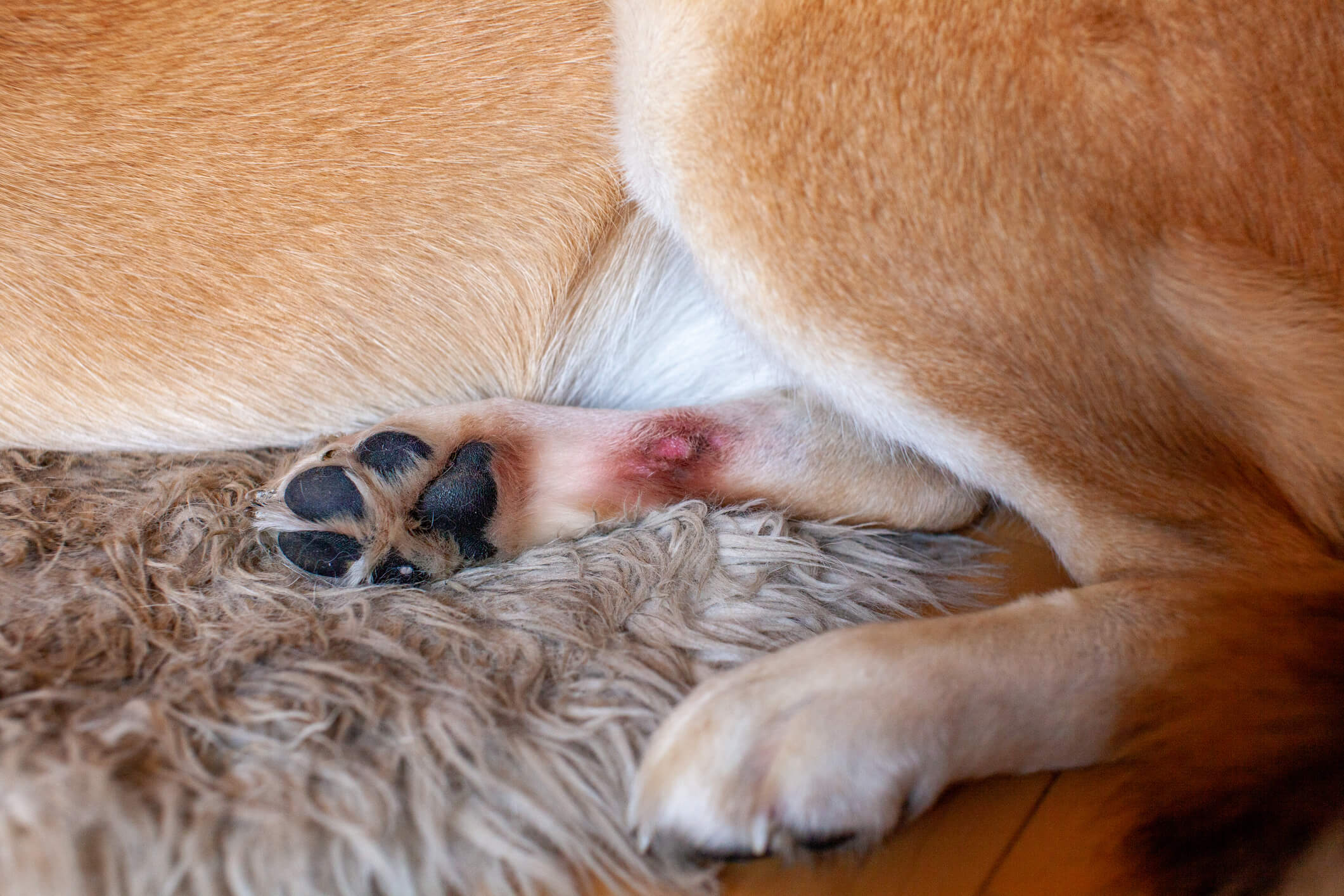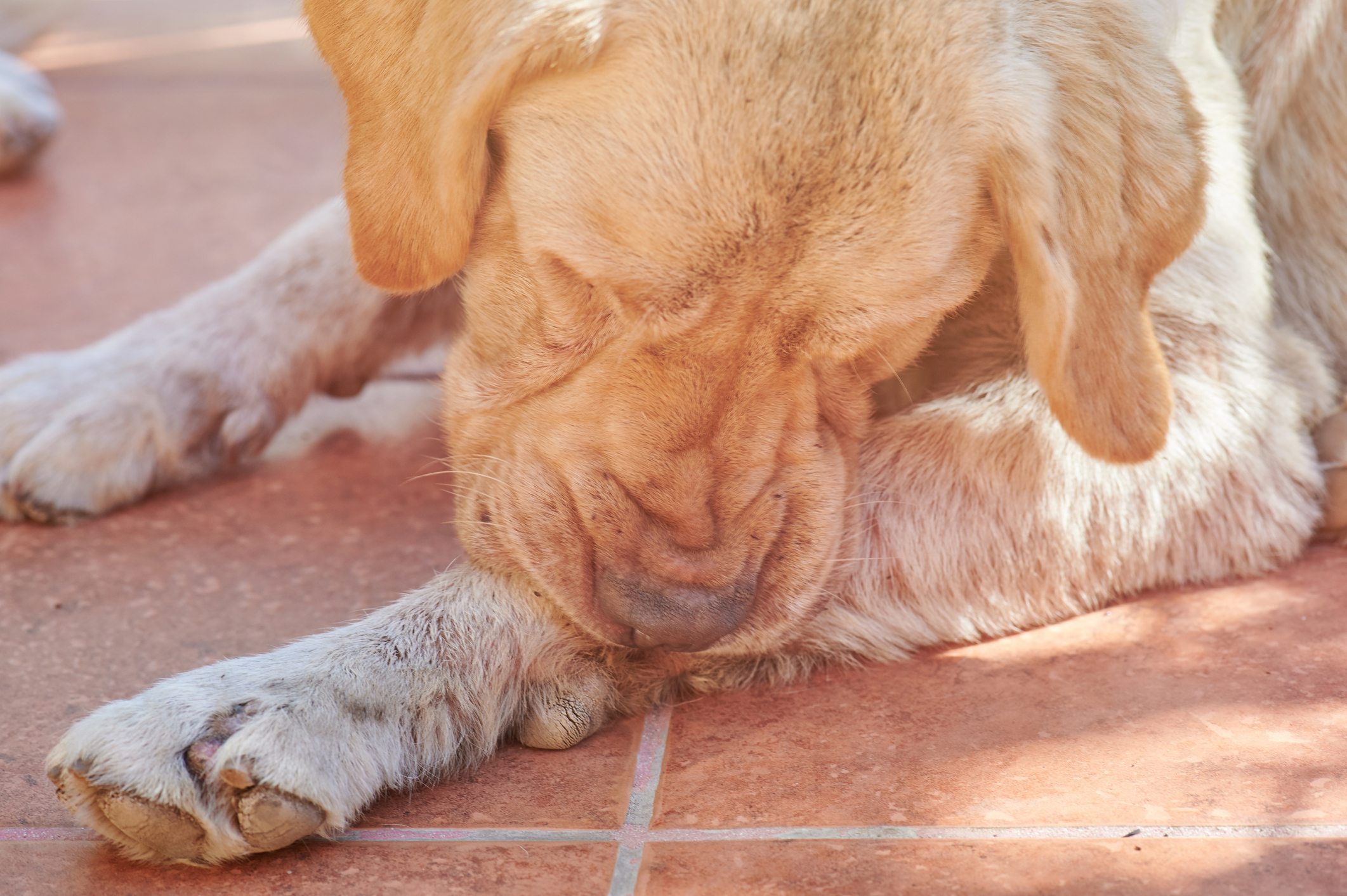
Watch Out for Hot Spots on Your Dog
Summer is here, and that means you and your dogs are sure to hit the pool, the trails and tons of other places for adventures. Unfortunately, all this extra exposure to moisture and grass might leave your pup feeling itchy, or worse, at risk for a type of skin infection called a hot spot.
Although hot spots are a year-round issue for many pets, your summer fun might be putting them at a greater risk. It’s important to know the signs so you can protect Fido from this common skin condition.
What are hot spots?
Hot spots are a type of skin disorder that primarily affects dogs. They appear as red, swollen lesions that might ooze discharge and are itchy and quite painful. Dog parents often mistake hot spots for insect bites, especially during the warmer months. Hot spots are also more common in the summer, which is why the two conditions often get mixed up.
Hot spots appear most frequently on the legs and hips. Upon closer inspection, the fur may appear crusty and matted from discharge. Or, your dog might’ve lost patches of fur due to excessive scratching. Hot spots resemble any number of skin disorders, so you’ll want to consult your veterinarian for a proper diagnosis.
One important thing to remember about hot spots is they don’t magically appear on their own. Rather, hot spots are forms of a secondary infection that always have an underlying cause. Common causes include food or environmental allergies, fleas, excessive grooming and moisture trapped beneath the fur. Dog breeds with long, thick coats have a greater risk for hot spots because thicker fur retains more water from rain, swimming and bath time.
Moisture and other irritants cause itchy skin, which leads to behaviors such as itching, biting and licking. When these frequent behaviors are concentrated on a single area of the body, your dog might accidentally break the skin’s surface, making them vulnerable to a secondary infection.

Health risks of hot spots
Hot spots aren’t life threatening, but they certainly won’t go away on their own. That’s because the itchy lesions create a never-ending cycle that only gets worse with time. It all starts with that underlying cause that makes your dog itch. The itching, biting and licking continues until their skin breaks open. This invites bacteria that cause a secondary infection, which spurs even more itching. More itching creates more hot spots, and the cycle continues.
Hot spots are frustrating for pet parents because the dog will typically keep itching until you or a vet can figure out what’s causing the issue. However, hot spots are the least of a dog owner’s worries. The presence of hot spots often means a more serious health condition like allergies is at play and requires medical attention.
How to treat hot spots
The treatment plan your vet prescribes for your dog’s hot spots will vary depending on the underlying cause. For instance, the vet might give your dog an anti-parasitic or flea and tick medication if pests are to blame. Antibiotics can help clear up ear and skin infections, while topical steroids address the hot spots themselves by reducing itchiness and inflammation.
Your dog might not have a parasite or infection at all. Pets often groom themselves too much when they’re stressed or bored. If that’s the case, medication will prove ineffective against the hot spots. Add some excitement to your dog’s life with more frequent play sessions that include activities like fetch, going for a walk, obstacle courses and swimming—just remember to thoroughly dry your dog afterwards!
Mental stimulation is just as important as physical activity when it comes to preventing hot spots, too. If you work long hours away from home, don’t worry—you can engage your dog’s brain even while you’re not home. Before heading out the door, give your pup a bone to chew on or puzzle toy filled with peanut butter. Your dog will be so busy, they won’t think about scratching!
While you treat the underlying cause of your dog’s hot spots, you’ll also want to do some at-home care to ensure the wound doesn’t get worse. Usually, this means keeping the lesion clean and applying an antiseptic ointment and preventing your pet from mutilating the skin further.
Don’t attempt to diagnose the cause of hot spots on your own. The skin lesions might be caused by so many different factors, you could easily misinterpret the underlying problem. Only a vet can properly assess the situation and prescribe the right treatment plan. If you notice a skin problem on your dog, take your pup to the vet right away in order to minimize their pain and clear up the hot spots as quickly as possible.
Hot spots are difficult to avoid yet easy to treat. They might be annoying for both you and your pet, but with the right form of treatment, those itchy lesions will clear up in just a few days. The prognosis is great for nearly all dogs, but make sure to call your vet if their symptoms don’t improve. Once you pin down the cause, hot spots should leave your dog for good!



